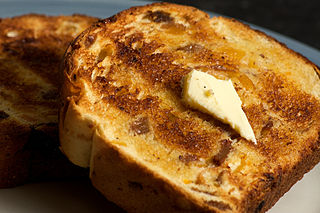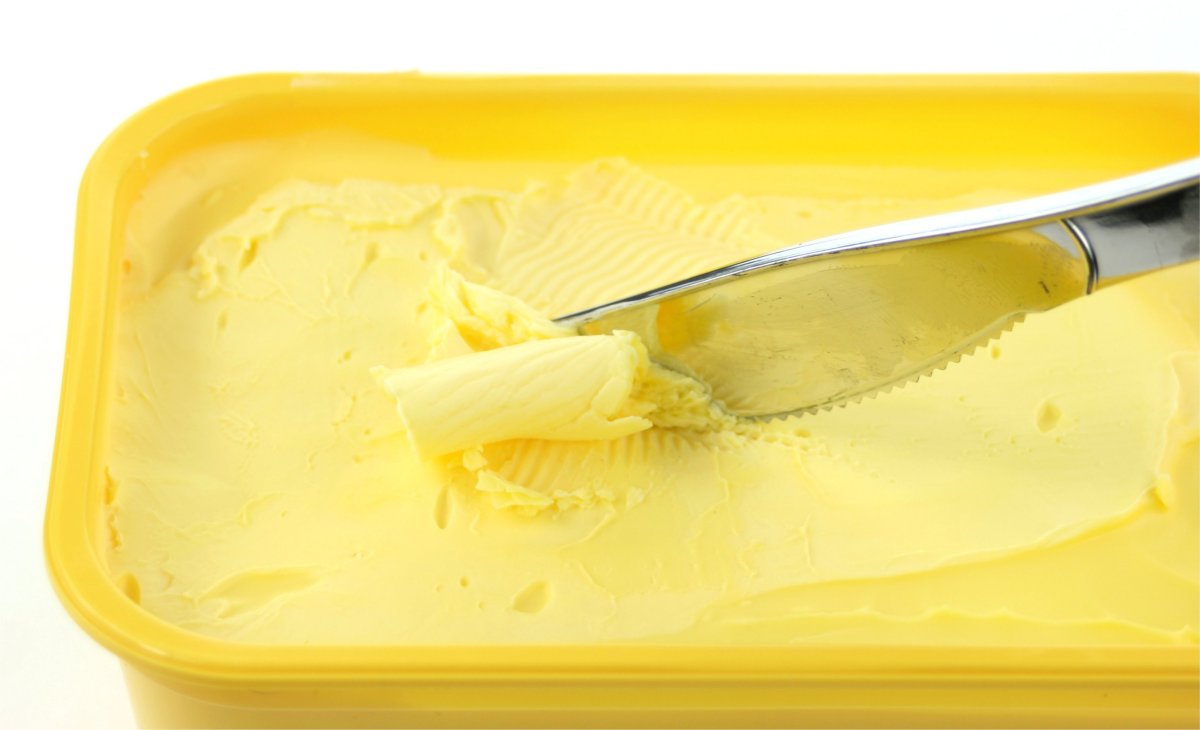We are not laying it on too thick when we say margarine has gone from the center to the margins. The former go-to gold standard for toast, vegetables, and baking, the product’s sales have been plummeting since 2000. How much so? In the early to mid-1990s, Americans ate 11 pounds of the butter-substitute every year. Today, it’s down to 3.5 pounds, and the majority of that comes from baked and packaged goods, as opposed to actual tubs, bottles, and sticks.
The rapid decline has everything to do with Americans’ changing perceptions of what constitutes healthy and natural food. It is also why Unilever, the world’s single largest margarine and spread manufacturer, has unceremoniously announced it will be abandoning the business altogether: “After a long history in Unilever, we have decided that the future of the spreads business now lies outside the group.”
Oh Oleo! Oh Fabio! Marginal Market Research
The modern product’s origins are well known: In the mid-19th century, seeking a shelf-stable and more cost-effective butter substitute for soldiers and the masses, Napoleon III offered a reward to the enterprising Frenchman whose product could check all the necessary boxes. Chemist Hippolyte Mège-Mouriès was up to the challenge and, combining beef tallow with cutting-edge emulsification techniques, he won the emperor’s prize. As commodity prices shifted over time, and advanced industrialization streamlined production, animal fats were replaced with vegetable oils, and the emulsification process expanded to include partial and complete hydrogenation.
And, through much of the twentieth century, margarine (and emulsified vegetable oils in general—the naming is complicated, federally regulated, and often inaccurate, so let’s just stick with “margarine”) was on quite the roll.
It fit perfectly into the low-fat, no-saturated-fat diet food trends that dominated the post war decades all the way through the 1990s. New brands emerged to capitalize on the booming market, and it was during this time that Unilever rolled out its two most iconic margarine brands, Country Crock and I Can’t Believe It’s Not Butter (Oh, Fabio, what have they done to you?).
Unfortunately, there was already a fly in the ointment and the American consumer was about to choke on it: much of this margarine magic relied upon trans fat, which quickly became the single most hated component of the American diet.

A Slippery Downhill Slope
The dents in margarine's tub continued to accumulate. As manufacturers reformulated to remove trans fat, Americans also began to reconsider saturated fats: no longer perceived as a one way ticket to strokes and heart attacks, scientists began distinguishing between different types of saturated fats, even acknowledging some are in fact good for you. Good news for butter fans, bad news for margarine.
Then, in 2015, the USDA released its modified dietary guidelines and, for the first time, placed no upward limit on fat (formerly, under the tyranny of the low-fat fallacy, consumers were advised that no more than 35% of their daily caloric intake be from fat). Instead, authors of 2015 health guidelines noted, “It’s the food that matters, not its fat content.” This signaled the culmination of a decade’s worth of reconsideration when it comes to fats, mono and poly saturated fats, and trans fats.
These revelations about fat content coincided with the country’s natural food trends: guided by nutritionists’ evolving consensus, consumers became suspicious of highly processed foods full of refined grains, added sugars, and, yes, vegetable oils, all of which bore little resemblance to foods found in the natural world.
Suddenly, it didn’t matter that a “health bar” only had 2 grams of fat—it mattered that it was composed of a list of unrecognizable and unpronounceable ingredients, many of which come from the fairy godmother of processed goods: margarine.
If Only They Could Sell Irony…or Butter
Thus it has come to pass that margarine’s initial reason for existence, shelf stability and affordability, are now its two biggest liabilities, no longer connoting quality but rather some kind of undesirable artificiality.
NYU nutrition professor Marion Nestle appreciates the irony: “Margarine has become a marker for cheap, processed, artificial, unhealthy food. The irony is hilarious. Unilever went to a lot of trouble to formulate healthy margarines, but the zeitgeist has caught up with them.”
Conversely, as margarine declined, butter’s fortunes clarified, going from the scourge of dieters and cardiologists to a delicious, natural, and even relatively healthier product. This is because, as Bonnie Liebman, Director of Nutrition at the Center for Science in the Public Interest, has it, “Butter has a more natural image. I think people have always been a bit suspicious about margarine.“
All this demand has been hard for the dairy industry to keep up with. Indeed, there is a great butter run afoot as even the great baron of butter, France, is experiencing shortages: imports to the US are up 49% as Americans move away from margarine, and, when 25% of each croissant is pure butter, supplies are going to run thin.
Manufacturers of similar industrial food products are now doubt taking notes as shifting ideas about nutrition and what is “natural” continue to impact everyday food products. And, for manufacturers whose products rely on refined sugar, they’re playing your song next.
Look, it's a cruel world out there. Customers love you until they don't and it's truly a bummer to get left in the dust by market trends. That's why market research methodologies like Voice of the Customer exist in the first place--to help you stay ahead of customers' constantly-evolving tastes, and spot future trends on the horizon. Except for fidget spinners. Nobody saw those coming.

